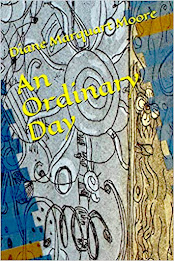 |
| Martin, boy traiteur, illustrated by Billy Ledet for Martin's Quest |
Traiteurs (treaters
or healers) are the major characters in three of my young adult novels set here
in Acadiana—books I call "The Martin Series" because the name Martin
appears in the title of all three volumes. A few days ago, I re-read an article
featuring a traiteur in an old issue
of Louisiana Folklore Miscellany and
decided to go online to see if newer articles about these healers' work had
been published in this journal.
Louisiana Folklore Miscellany is
the official publication of the Louisiana Folklore Society, an organization
formed in 1956 to promote the "study, documentation, and accurate
representation of the traditional culture of Louisiana." This publication
is a fascinating journal for teachers and writers of Louisiana history. In a
2008 issue, I read an article by Julia Swett entitled "French Louisiana Traiteurs" in which I discovered
many parallels of thought that had appeared in my young adult novels featuring traiteur characters, and also in talks
I'd given to students throughout south Louisiana about the traiteurs in the Martin Series.
Swett, a graduate of Religious Studies and Cultural
Anthropology, respects the work of traiteurs
who use faith healing methods and herbal remedies and pointed out that
indigenous herbal remedies are frequently used in pharmaceutical drugs. In
talks that I delivered, I pointed out the same fact, tracing some of the herbal
remedies to those used by native Americans who co-mingled with the Acadians following
the Grand Derangement when the French Canadians fled to south Louisiana during
the 18th century.
Another facet of traiteur
beliefs she talked about, which I had emphasized in my talks about the Martin
Series, was the link between healthy bodies and healthy minds and the way a traiteur tries to understand how the
patient feels when he begins treatments. In my latest young adult novel, Martin and the Last Tribe,
I wrote: "Christ didn't believe that disease was part of the divine order
of things...He was aware that resentment, fear, anxiety, hatred, and the like
cause disease. When he spoke, he talked about faith, hope, the will to live,
and he was always trying to lift the people to a higher state of becoming well..."
In another passage of the same book, I wrote: "To me, traiteur work was a way I (Martin, the hero of the Martin Series) could
quiet the sick person's mind and come into contact with the part of the self
that the person I was treating wasn't aware of... then lead that person to
become conscious of what made him sick..."
 Swett explained that traiteurs
use laying on of hands and prayer, just as clergy do in the sacrament of
healing in the Episcopal and Roman Catholic churches, and in the Martin Series,
Martin and his grandmother use this method during all of their healing
sessions. Interestingly, Swett wrote: "Many healing systems approach the
individual body as being continuous or integrated with the social body. When
illness manifests in the individual body, it is indicative of a lack of integration
with the social body." And in Martin and the Last Tribe, I write, "We did our traiteur work not only to relieve the
sick person, but to remind him that he could return to the healthy order of
things" ("the healthy order" meaning community or the social
body).
Swett explained that traiteurs
use laying on of hands and prayer, just as clergy do in the sacrament of
healing in the Episcopal and Roman Catholic churches, and in the Martin Series,
Martin and his grandmother use this method during all of their healing
sessions. Interestingly, Swett wrote: "Many healing systems approach the
individual body as being continuous or integrated with the social body. When
illness manifests in the individual body, it is indicative of a lack of integration
with the social body." And in Martin and the Last Tribe, I write, "We did our traiteur work not only to relieve the
sick person, but to remind him that he could return to the healthy order of
things" ("the healthy order" meaning community or the social
body).
For those readers who are interested in Louisiana Folklife
and Folklore, I recommend the Louisiana
Miscellany and other publications of
the Louisiana Folklore Society that are available online. I also recommend the work
of the Louisiana Folklife Center at Northwestern State University, which
coordinates the Natchitoches/NSU Folklife Festival and is an archival
repository for many folklife materials. The Center contains a print library of
books and periodicals and still photographic images.
Note: Covers of Martin Finds His Totem and Martin and the Last Tribe feature paintings by my brother Paul Marquart.














No comments:
Post a Comment